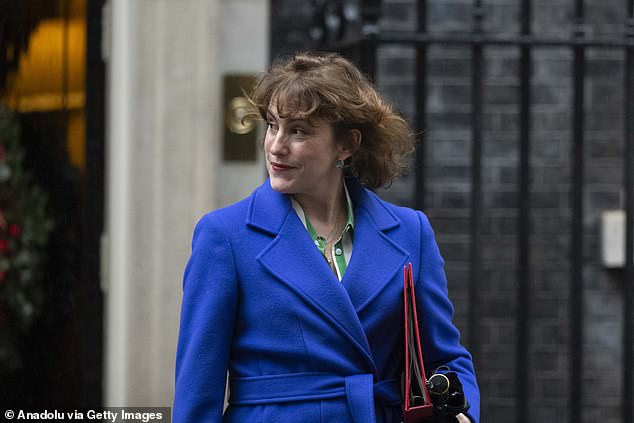Health Secretary Victoria Atkins summons bosses of five worst-performing A&E sites and tells them to ‘buck up their ideas this winter’
The Health Secretary has launched a crackdown on some of the worst-performing NHS trusts this winter.
Victoria Atkins called the bosses of the five trusts with the longest A&E and ambulance transfers to a meeting.
It is understood the CEOs of University Hospitals Plymouth Trust, Royal Cornwall Hospitals Trust, Gloucestershire Hospitals FT, The Shrewsbury and Telford Hospital Trust and Worcester Hospital attended the virtual meeting with the Secretary of State.
It follows reports that emergency patients in some areas were forced to wait in ambulances for up to ten hours, while hospitals prioritized existing patients.
It is understood the CEOs of University Hospitals Plymouth Trust, Royal Cornwall Hospitals Trust, Gloucestershire Hospitals FT, The Shrewsbury and Telford Hospital Trust and Worcester Hospital attended the virtual meeting with the Secretary of State.

A source close to the health minister said they were told 'in no uncertain terms' that their performance was not acceptable and that they would be closely monitored this winter. Pictured: Victoria Atkins leaving Downing Street today
While ambulance handover delays initially appeared to have improved in November compared to last winter, the situation appears to have deteriorated in December with a significant increase in handovers delayed by more than 30 minutes.
This puts pressure on both the ability of ambulances to respond in the community and acute trusts who face patient flow issues while admitting patients to their emergency departments.
NHS England chief executive Amanda Pritchard and emergency department leader Sarah-Jane Marsh were also called upon to outline new protocols for long transfer delays, Health Service Journal reported.
A source close to the health minister said they were told 'in no uncertain terms' that their performance was not acceptable and that they would be closely monitored this winter.
The source said: 'The Foreign Secretary has made it abundantly clear to senior management that they need to substantiate their ideas this winter.
'The managers accepted they had all the resources they needed from the department and the NHSE, but failed to achieve their objectives and let their local communities down.
'It's frankly unfair that patients in these areas face the longest delays due to poor management – whether that's sitting in an ambulance, in A&E or waiting to be discharged from the ward for Christmas to go home.'
Patients suffering a heart attack or stroke, known as category two callers, had to wait an average of 38 minutes and 30 seconds in November for paramedics to arrive on the scene.
This is three minutes faster than October, but still more than twice as long as the 18-minute target.
The average response time for category one – calls from people with life-threatening illnesses or injuries – was 8 minutes and 32 seconds. This is eight seconds faster than the month before. However, the target time is seven minutes.
Meanwhile, weekly NHS data shows that one in three patients who arrived at hospitals by ambulance last week waited more than 30 minutes to be transferred to A&E.
There were 28,498 delays of half an hour or more recorded across all hospital trusts in the week before December 10, representing 34 per cent of all handovers.
In one week, this figure has risen from 25 percent.
NHS rules state that the process must be completed within 15 minutes and that no procedure should take longer than an hour.
Long transfer delays can leave ambulances queuing outside hospitals for hours, rather than responding to incoming calls.
Rishi Sunak has said the Government will keep a close eye on ambulance delays this winter.
